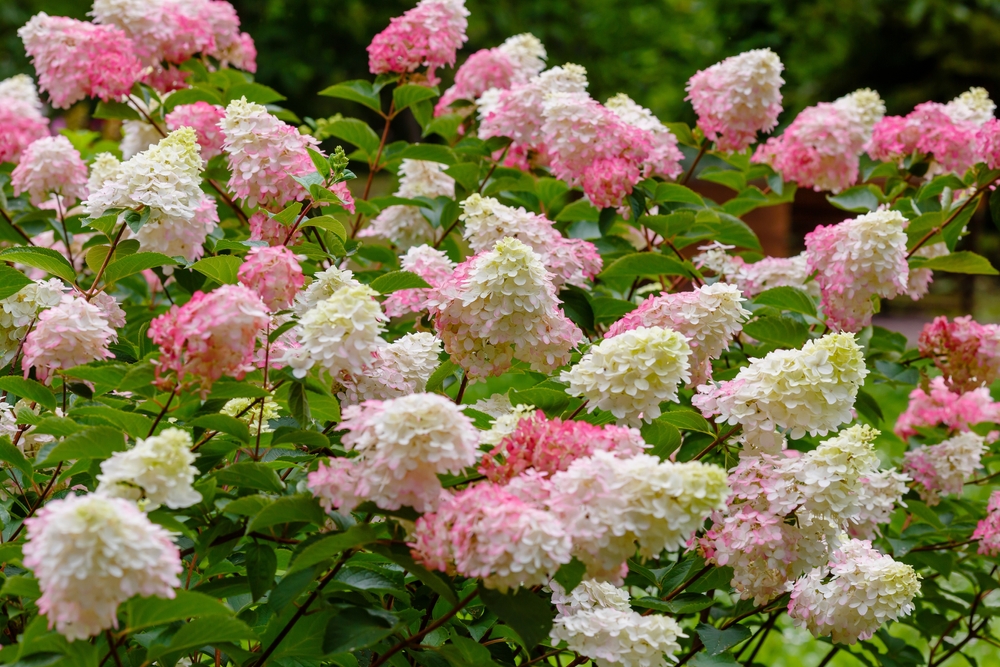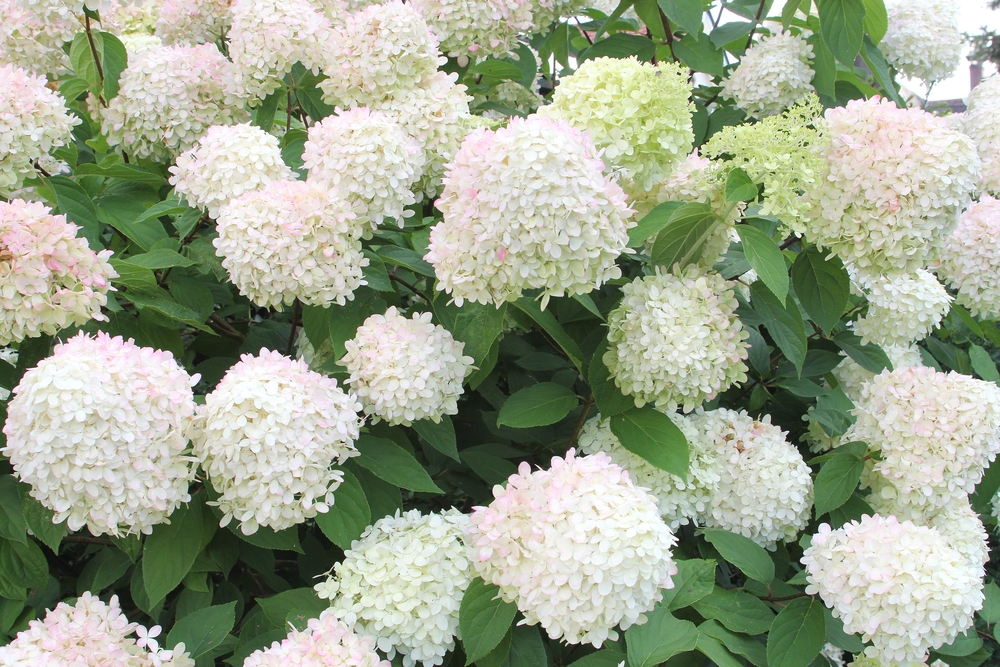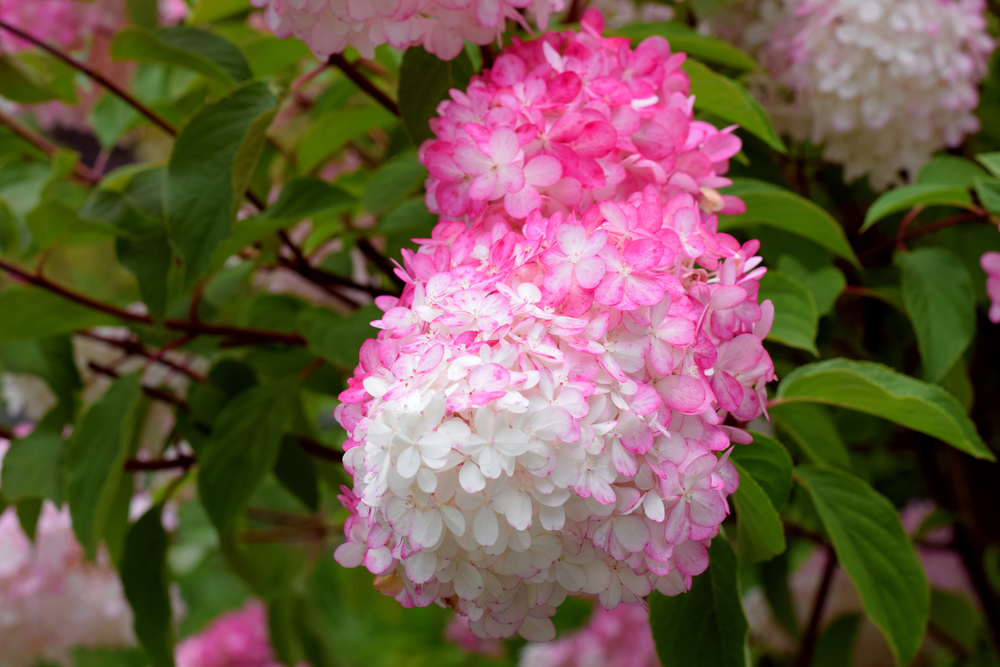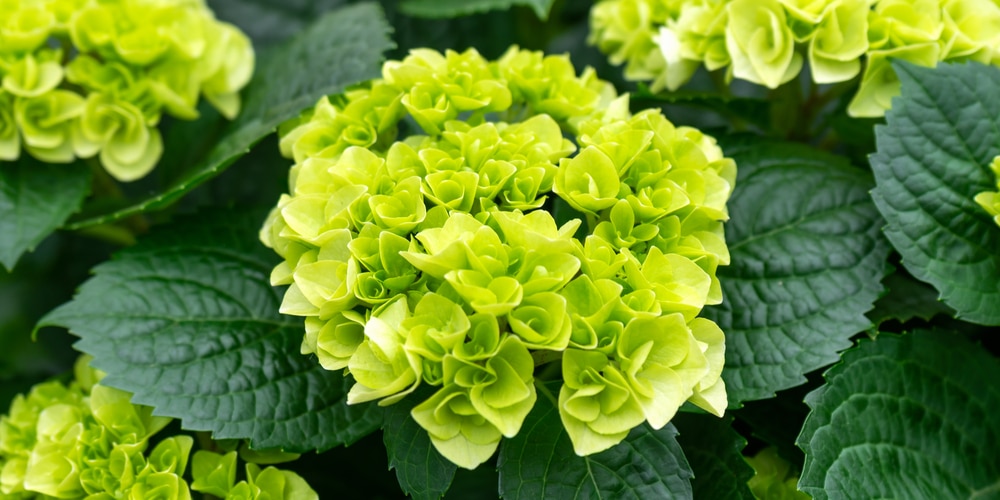With dozens of different hydrangea species and varieties, you could end up confused about which hydrangea plant you want in your garden. To solve this problem we’ve compiled a list of the best hydrangeas you can add to your landscape, including the newer hydrangea candelabra.
Hydrangea Candelabra

Hydrangea Candelabra belongs to the panicle hydrangea species and has cone-shaped blooms that point upwards. What’s especially unique about this variety is that the flowers do not flop over and stay upright even as they fade. It’s worth mentioning that Candelabra hydrangeas can thrive in colder climates, even in USDA zone 3.
The compact shrub only grows to a manageable 5 feet (or 60 inches) and has thicker stems than most. The flowers start creamy white, then slowly transform into pink and red as it matures. The green leaves serve as a nice contrast to the red stems and the shifting flowers that change with the seasons.
Hydrangea Moon Dance
‘Moon Dance’ hails from the paniculata type and is quite similar to the Candelabra. The sturdy stems support the huge, cone-like flower structure and hold them up throughout its cycle. What’s great about the hydrangea plant is that it’s heat and drought-tolerant and can live outdoors in zones 4 through 9.
Instead of the usual blue and red flowers, ‘Moon Dance’ has white panicle blooms that peek out of the foliage. With the right care and location, the plant slowly turns into its namesake, with its white flowers gently swaying with the wind.
Hydrangea Vanilla Strawberry
This panicle-type hydrangea shrub is also like the Candelabra in that the flowers start out creamy white. However, ‘vanilla strawberry’ seems to bide its time and choose to leave some flowers white while others are a mix of white and pink (hence the name). As the blooms age, they sometimes appear dark red and blend in nicely with the stems.
This panicle species is an easy-grow variety, and it doesn’t take much for the plant to grow its best. It can thrive in zones 4 to 8 and requires rich and constantly moist soil that’s slightly acidic.
Hydrangea Little Lime Punch
Sporting one of the most beautiful and striking blooms in the hydrangea niche, ‘Little Lime Punch’ is an offshoot of the ‘Little Lime’ variety but with more colors.
The flower buds begin lime green and slowly turn into darker shades as it grows. The blooms turn light pink, then a gorgeous red, with the color change starting at the bottom to the top. At one point the flowers will resemble an inverted strawberry snow cone, which occurs from summer through fall.
For the best results, plant your hydrangea in full sun in cooler regions and partial sun in hotter zones.
Hydrangea Little Lamb
A Belgium import, ‘Little Lamb’ features small and dainty flower petals sitting atop the foliage. From a distance, the blooms are like tiny dancing lambs that move with the breeze. Hydrangea ‘Little Lamb’ is somewhat compact and only grows to around 6 feet tall (or 72 inches), but growers will find the space quickly filled with white and baby pink blooms that seemingly last forever.
Those in zones 3 to 8 can grow this hydrangea type with little difficulty. Just remember to put them in a location that gets bright light and water regularly.
Hydrangea Strawberry Shake
‘Strawberry Shake’ hydrangea is a vigorous grower given the right conditions, with fascinating blooms to match. The plant maxes out at 5 feet tall and can be put in large pots and containers for those who are living in zones 3 or 9.
The panicle hydrangea variety offers dried flowers, which have a combination of old cream and light pink. Care is very minimal- just remember to water the plant deeply and when the top inch of the soil is dry.
Hydrangea Quick Fire
‘Quick Fire’ has that nice fall display where the leaves turn rose red and gold. Aside from that, you can look forward to pure white flower clusters slowly turning into pink, then red through summer and fall. The plant is great as a standalone specimen and when you need to fill up a large amount of space quickly. There’s also a dwarf variety, the ‘Little Quick Fire’ if you plan on mixing them with your other plants.


